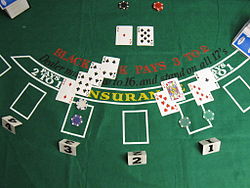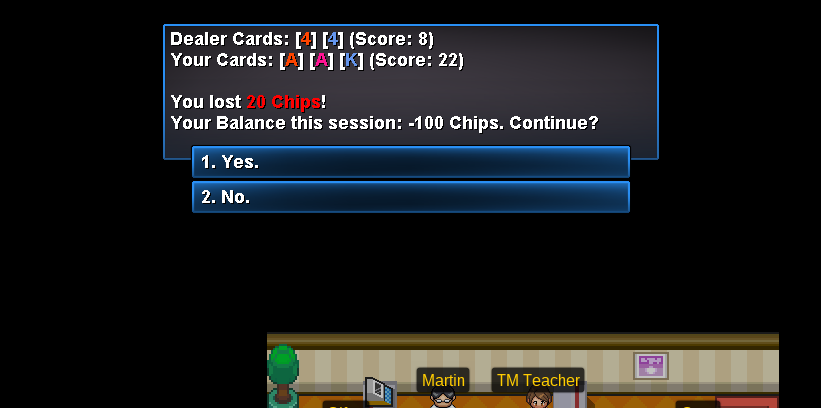2 Aces Blackjack
Welcome back to our Deep Dive series on building the casino game Blackjack in C# and Blazor WebAssembly! In this second part, we're going to use the modeling ideas we wrote down in the previous post to build a complete C# model for a Blackjack game. In Poker: amazing hand! In Blackjack: also an amazing hand! Two Aces Blackjack of your second deposit up to £250, 50% Two Aces Blackjack of your third deposit up to £150 Bonus funds are separate to Cash funds, and are subject to 35 x wagering the Two Aces Blackjack total of bonus, cash & bonus spins. The probability that the second card is a 10 point card is 16/51. So the probability of an ace first blackjack is (4/52). (16/51). Multiply this by 2 because the ten could just as easily be the first card and the answer is 2. (4/52). (16/51) = 128/2652 = 0.0482655, or about 1 in 20.7. Sep 18, 2019 Aces may be counted as 1 or 11 points, 2 to 9 according to pip value, and tens and face cards count as ten points. The value of a hand is the sum of the point values of the individual cards. Except, a 'blackjack' is the highest hand, consisting of an ace and any 10-point card, and it outranks all other 21-point hands.
As the dealer, the basic rules of blackjack still apply. Cards 2 through 10 are worth their face value. The jack, queen and king are worth 10 points each. The ace has a value of either 1 point or 11 points, depending on its usage in your hand.
- Appendices
- Miscellaneous
- External Links
Introduction
Lucky Aces is a blackjack side bet I noticed on an electronic blackjack game on October 13, 2016 at the Mirage. It based based on the number of aces between the player's and dealer's first two cards.
2 Aces In Blackjack
Rules
- Eight decks of cards are used.
- The Lucky Aces pays based on the four cards comprising the player's and dealer's initial two cards. The pay table is shown below. All wins are on a 'to one' basis, meaning the original bet is returned on a win.

Lucky Aces Pay Table
2 Aces Blackjack Rules
| Event | Pays |
|---|---|
| Four aces | 500 |
| Three suited aces | 250 |
| Three aces | 30 |
| Two suited aces | 12 |
| Two aces | 5 |
| One ace of diamonds | 2 |
| One ace | 1 |
Analysis

The following table shows the probability and contribution to the return of all possible outcomes. The lower right cell shows a house edge of 14.90%.
Lucky Aces Pay Table
| Event | Pays | Combinations | Probability | Return |
|---|---|---|---|---|
| Four aces | 500 | 35,960 | 0.000029 | 0.014619 |
| Three suited aces | 250 | 86,016 | 0.000070 | 0.017484 |
| Three aces | 30 | 1,818,624 | 0.001479 | 0.044359 |
| Two suited aces | 12 | 8,236,032 | 0.006696 | 0.080356 |
| Two aces | 5 | 28,237,824 | 0.022959 | 0.114794 |
| One ace of diamonds | 2 | 74,908,672 | 0.060905 | 0.121810 |
| One ace | 1 | 224,726,016 | 0.182714 | 0.182714 |
| No aces | -1 | 891,881,376 | 0.725148 | -0.725148 |
| Total | 1,229,930,520 | 1.000000 | -0.149012 |
The next table shows the house edge for 4, 5, 6, and 8 decks.


House Edge by Number of Decks
Written by: Michael Shackleford